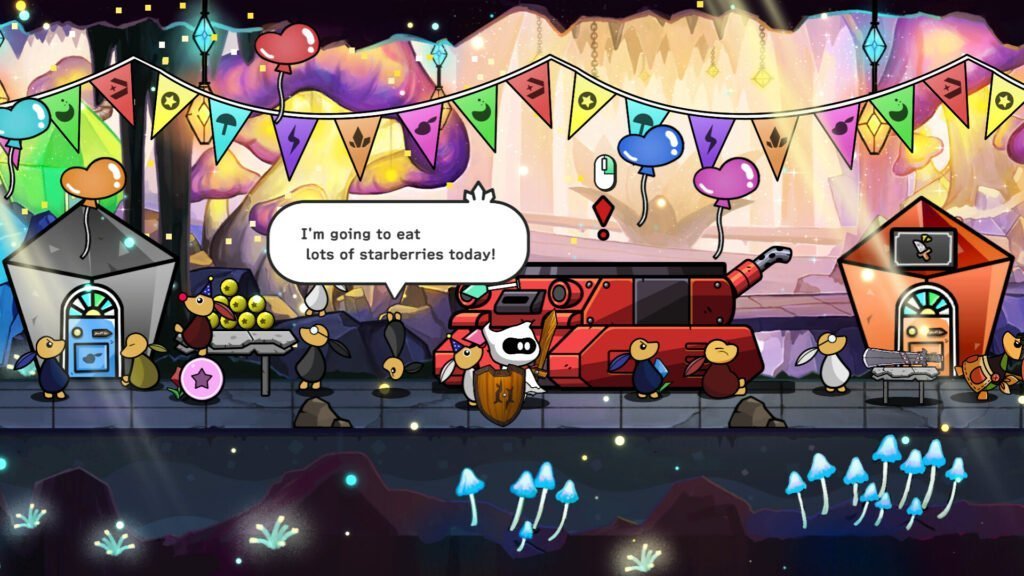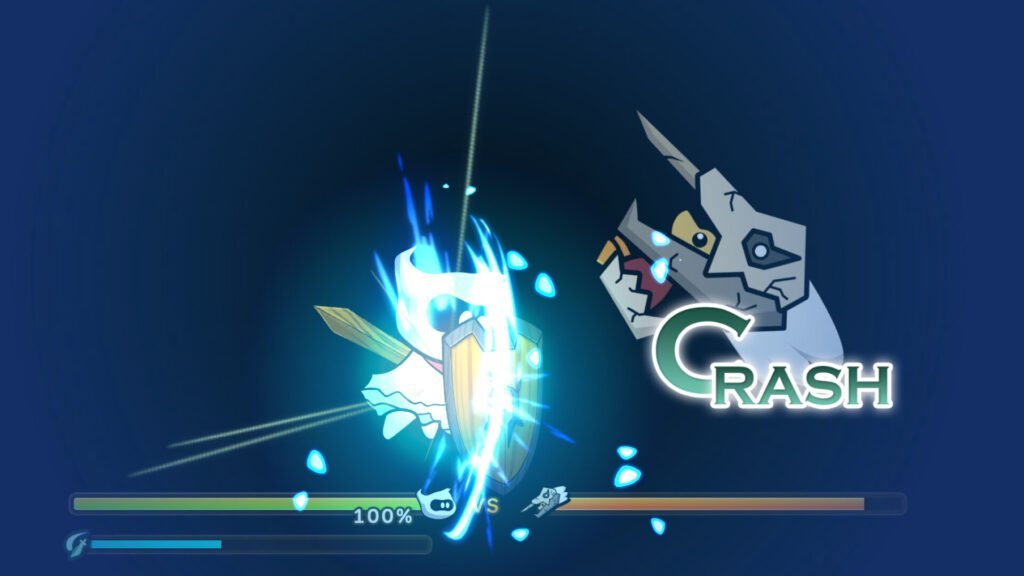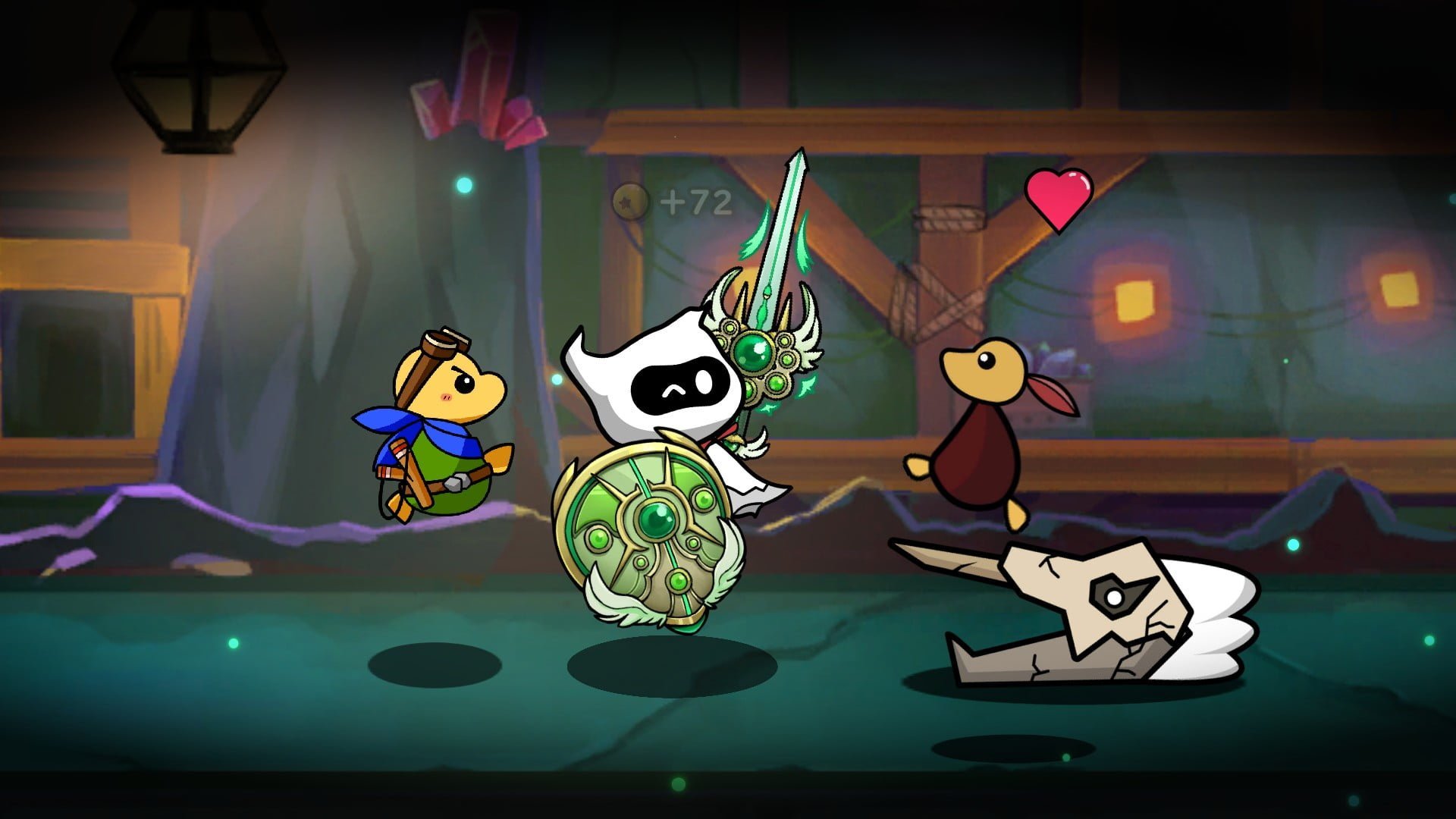One of the perks of writing about games is getting exposed to games I probably would have missed otherwise. Sometimes they end up not quite hitting, but other times they end up being a surprise favorite. Ignistone is the latter. A small roguelike built around parries, Ignistone is simple and elegant in its design, a prime example of less is more.
Ignistone follows a group of people known as Mames and the titular Ignistone. The Mames live in a large cave and the Ignistone is the source of light, making it very important. At the start of the game, a festival is about to be held celebrating the Mame village’s history. It’s interrupted when a group of masked Mames arrive and declare the village enemies, stealing the Ignistone and retreating to the mines. With the Mame’s future in peril, one villager and their cloaked friend step up to venture into the mines and retrieve the stone.
The basic structure sees you making runs into the dungeon collecting starberries and freeing Mames to expand the facilities back at the village so you can craft new amulets and gear to give you an edge on your next outing. Every ten floors you can return and spend what you’ve gathered. If you fall anytime before that, you lose whatever berries you’ve gotten and drop whatever sword and shield you brought in with you. And if they’re lost, you can’t get them back.

The loss of gear is the biggest point of friction. New gear requires materials to build and aren’t easily obtained. They can be rebuilt, but that costs materials that could be spent on higher level weapons. Until you’ve got the shop upgraded some, getting a hold of the specific crystals you need to forge new swords and shields is difficult. Not difficult enough to actively impede getting new gear at a frequent pace, mind, but enough that the loss of said equipment can still hurt.
Amulets on the other hand can be created in bulk. Amulets provide various passive abilities and buffs. They range from healing upon a successful parry or finishing a battle to buffs that kick in when your health is above or below certain thresholds or increasing attack power immensely if you take a direct hit. Each one only costs a small sum of starberries (the Mames’ currency of choice). The higher the level of amulet, the stronger it is and the more it costs to make. You can only equip one to start, but can have as many as eight active at once with time, allowing you to create varied character builds.
Ignistone is built around parries. Its combat is very simple. You have three actions: attack, guard/parry, and a special attack. Battles are one-on-one affairs where you try to parry their attack to knock them down so you can attack relentlessly. You can also attack in the window where they’re vulnerable before they try to strike themselves, but you need to be conscious of when to hold back and be ready to deflect or block their attacks.
Crucially, Ignistone understands the importance of making a parry approachable if it is to be the core mechanic. Traditionally parries are made to be difficult high-risk actions. You’re choosing to deflect an attack rather than just block it, so it stands to reason that it should be hard. But this approach only works when you have other defensive options that are safer, lest you make defense painfully, frustratingly difficult.

Ignistone takes a kinder approach. Before fighting an enemy, you’re given the option to practice. For the first 20 floors of the main dungeon, this is a free action you can perform as many times as you want. After that it costs a small number of starberries, which isn’t a big deal since you can earn a lot very easily. It even tells you whether you were early or late, which helps a ton with learning the exact timing since you don’t have to intuit it all on your own (it also does this outside of training). Better still, blocking is also valid. If you block an attack before it connects, you reduce its damage significantly and still make progress on knocking the enemy down. Parries aren’t mandatory, as such, but heavily encouraged.
While I wouldn’t call it easy, Ignistone makes the parry timing generous enough that it isn’t a frustrating process to learn. I was able to get the hang of most enemies pretty easily after a couple of tries. Some are easier to parry than others (that one with the big hammer still gives me trouble), but that the option to practice is always available means I could take whatever time I needed to get consistent enough to feel confident to try in a proper battle.
I like a good parry, but it’s the sort of thing that’s easy to screw up. It requires a very delicate balance to ensure players are actually encouraged to engage with it while also still keeping the satisfaction of making the right read and pulling it off. Ignistone strikes this balance well. It’s also just a good feeling parry. The close-up on the hit as the game slows down, the opponent flying as the word “crash” appears in large letters, the satisfying sound of weapons clashing against your shield. It never gets old.
The main dungeon is 100 floors long, but it goes by pretty quickly. I finished it in just under a couple of hours. It isn’t until you’ve finished that dungeon that Ignistone truly shows the depth of its design. The extra dungeons that open up are all equally lengthy, but where they differ is in the specific conditions they impose and how they change your approach. One is just a harder, slightly shorter extension of the first dungeon (stronger foes, tighter parry window), another puts you on a time limit, and one removes the parry entirely. They all require a more considered approach than the initial dungeon, your choice of weapons and amulets being key to success.

My favorite is the one that adopts a more traditional roguelike structure. Instead of being able to bring a set load out in, all your equipment is picked up and upgraded as you go. It’s another 100 floor dungeon only this time you have to clear in it one go rather than being able to exit and resume every ten levels. It’s a fun divergence from the rest of the game where you’re encouraged to think about how to spec yourself out.
Ignistone is the sort of roguelike that doesn’t out stay its welcome. Its main scenario is short so you can just hop out if you’ve got your fill, telling a brief but complete story, but also has plenty more in store if you still want to play with its systems some more. I’m usually quick to shelve roguelikes once I’ve “finished” them once because, well — story’s over. But getting to that point usually requires such a large investment of time that I’m usually ready to move on by then. I’ve played countless runs by that point, having seen the breadth of the systems and figured out how best to use them to suit my play style. Not much experimenting and exploring the systems by then, merely going through the motions again and again.
Ignistone wrapped up quickly, but I’ve still been loading it up for a quick session because I haven’t reached the point of being done yet. The loop hasn’t gotten tiresome because I haven’t needed to devote dozens of hours just to “finish” the game. It’s refreshing. Roguelikes are easily the sort of game that can last a while due to the nature of the genre. Playing one that’s less of a timesink for a change is nice, especially when it’s as well put together as Ignistone is.





